

|
|
|
variable.h File ReferenceDefinition of the Tvariable type and the associated functions. More... #include "interval.h"Go to the source code of this file.
Detailed DescriptionDefinition of the Tvariable type and the associated functions.
Definition in file variable.h. Define Documentation
One of the possible type of variables. System variables are those defining the motion of the mechanism at hand.
Definition at line 24 of file variable.h. Referenced by AddVariable(), CSRemoveUnusedVars(), GenerateJointEquations(), GenerateJointRangeEquations(), GenerateLinkRot(), IsSystemVariable(), MaxKinematicReduction(), PrintVariables(), RemoveVariable(), and SampleCuikSystemInBox().
One of the possible type of variables. Secondary vars are system variables that are not necessary to completely determine the configuration of the mechanisms. For instance, the variables for sph-sph joints (i.e, the director vector for the cylinder defined in the joint) can be determined from the pose of the connected links. The variables associated with ranges (vectors, cosinus,...) are also secondary variables. In practice, secondary vars are not used for bisection and are not taken into account when computing the size/volume for a given box.
Definition at line 44 of file variable.h. Referenced by AddVariable(), GenerateEquationsFromBranch(), GenerateJointEquations(), GenerateJointRangeEquations(), IsSecondaryVariable(), PrintVariables(), and RemoveVariable().
One of the possible type of variables. Dummy variables are variables that appear in the linearization process.
Definition at line 53 of file variable.h. Referenced by AddVariable(), CSRemoveUnusedVars(), DummifyAndAddEquation(), GenerateJointEquations(), IsDummyVariable(), MaxReduction(), MPI_TreatBox(), PrintVariables(), RemoveVariable(), SampleCuikSystemInBox(), and SolveCuikSystem().
One of the possible type of variables. Cartesian variables are those given coordinates for points in the mechanism structure.
Definition at line 62 of file variable.h. Referenced by AddVariable(), IsCartesianVariable(), PrintVariables(), and RemoveVariable().
Used for equations with non-assigned role yet. Definition at line 68 of file variable.h. Function Documentation
Creates a new variable.
Definition at line 21 of file variable.c. References INF, Tvariable::is, Tvariable::name, NEW, NewInterval(), and Tvariable::type. Referenced by DummifyAndAddEquation(), GenerateEquationsFromBranch(), GenerateJointEquations(), GenerateJointRangeEquations(), and GenerateLinkRot().
Here is the call graph for this function:

Here is the caller graph for this function:
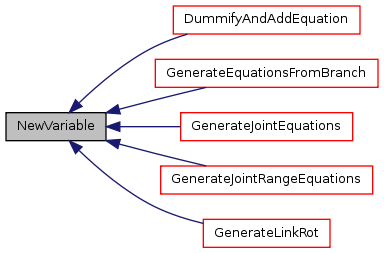 Creates a new variable from another one.
Definition at line 32 of file variable.c. References CopyInterval(), Tvariable::is, Tvariable::name, NEW, and Tvariable::type. Referenced by AddVariable(), CopyVariables(), and GetCSVariable().
Here is the call graph for this function:

Here is the caller graph for this function:
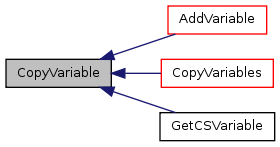
Gets the variable type.
Definition at line 42 of file variable.c. References Tvariable::type. Referenced by AddVariable(), GetVariableTypeN(), IsCartesianVariable(), IsDummyVariable(), IsSecondaryVariable(), IsSystemVariable(), PrintVariables(), and RemoveVariable().
Here is the caller graph for this function:
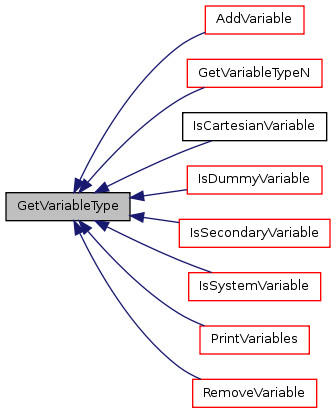
Gets the variable name.
Definition at line 47 of file variable.c. References Tvariable::name. Referenced by AddVariable(), AddVariable2CS(), CSRemoveLCVars(), CSRemoveVarsWithCtRange(), DummifyAndAddEquation(), GetVariableID(), GetVariableNames(), InitMapping(), and SimplifyCuikSystem().
Here is the caller graph for this function:
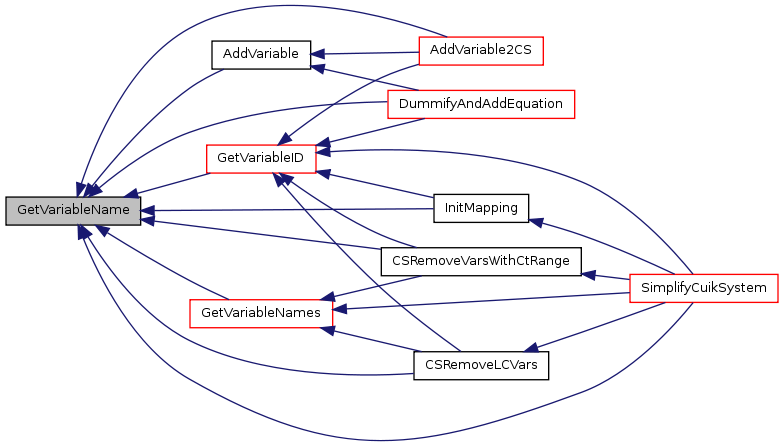 Sets the new range for the variable.
Definition at line 52 of file variable.c. References CopyInterval(), and Tvariable::is. Referenced by DummifyAndAddEquation(), GenerateEquationsFromBranch(), GenerateJointEquations(), GenerateJointRangeEquations(), GenerateLinkRot(), SampleCuikSystemInBox(), SetCSVariableRange(), and SimplifyCuikSystem().
Here is the call graph for this function:

Here is the caller graph for this function:
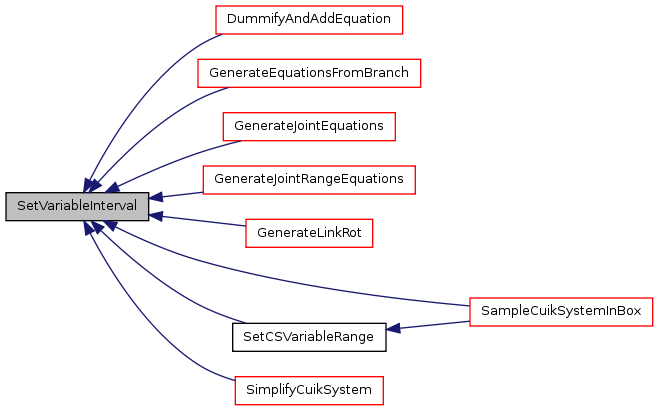 Gets the range of valid values for the variable.
Definition at line 57 of file variable.c. References Tvariable::is. Referenced by BoxFromVariables(), and DummifyAndAddEquation().
Here is the caller graph for this function:

Prints the name of a variable to a stream that can be stdout.
Prints a variable (name plus valid range) to a stream that can be stdout.
Definition at line 62 of file variable.c. References Tvariable::is, Tvariable::name, PRINT_VARIABLE_NAME, and PrintInterval(). Referenced by PrintVariables().
Here is the call graph for this function:

Here is the caller graph for this function:

Deletes the Tvariable structure and frees the allocated memory.
Definition at line 70 of file variable.c. References Tvariable::name. Referenced by DeleteVariables(), DummifyAndAddEquation(), GenerateEquationsFromBranch(), GenerateJointEquations(), GenerateJointRangeEquations(), GenerateLinkRot(), and RemoveVariable().
Here is the caller graph for this function:
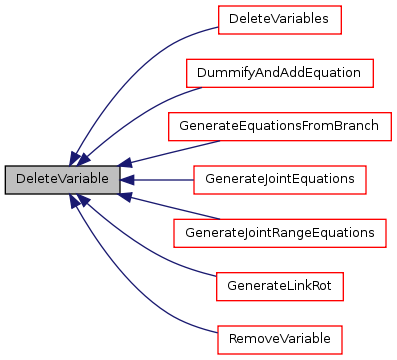 | ||||||||||||||||||||||||||||||||||||||||||||||||||||||||||||||||||||||||||||||||||||||||||||||||||||||||||||||||||||||||||||||||||||||||||||||||||||||||||||||||||||||||||||||||||||